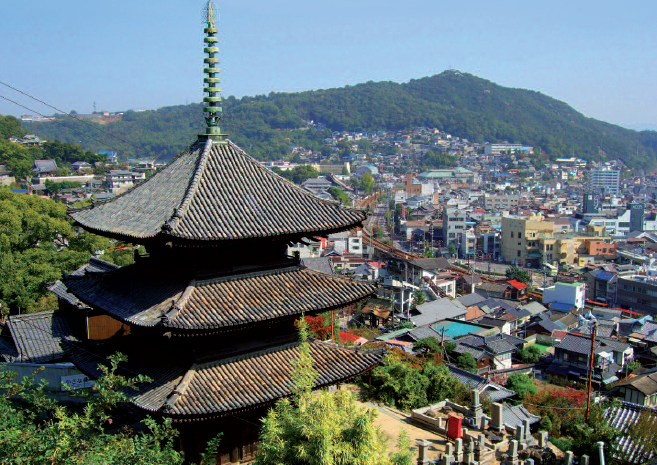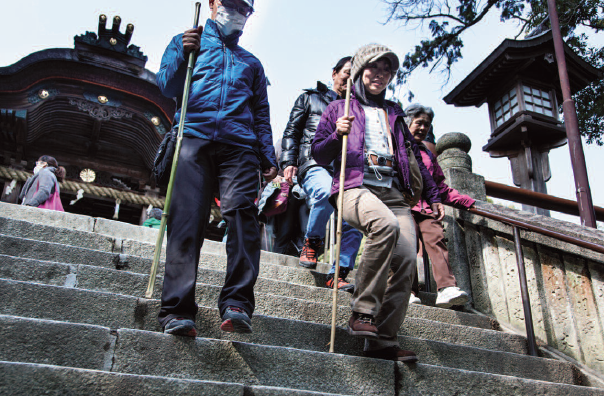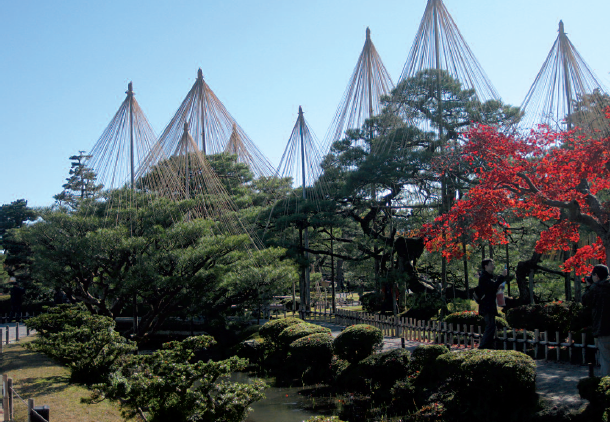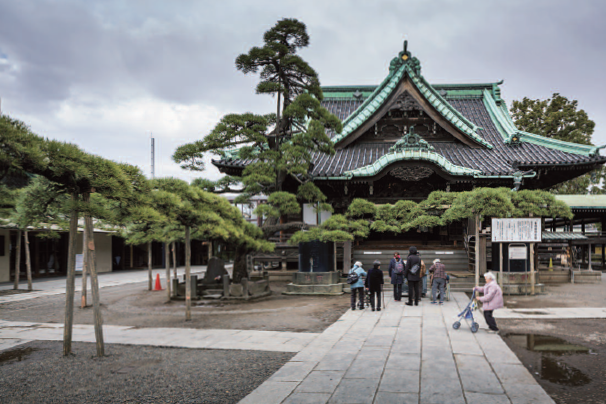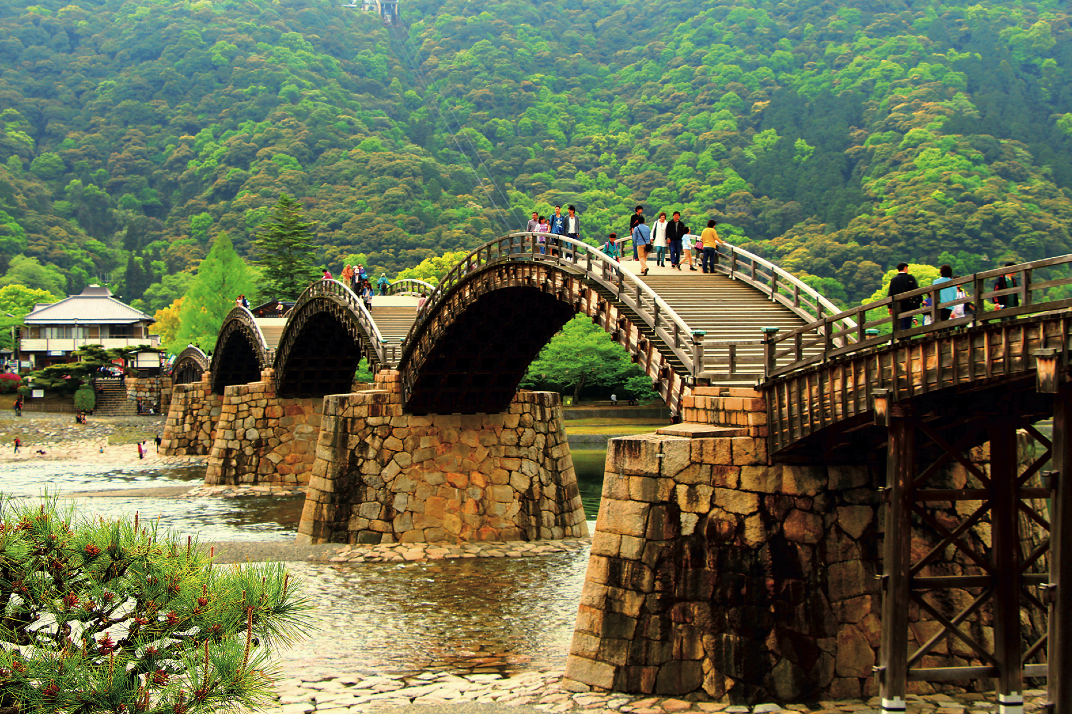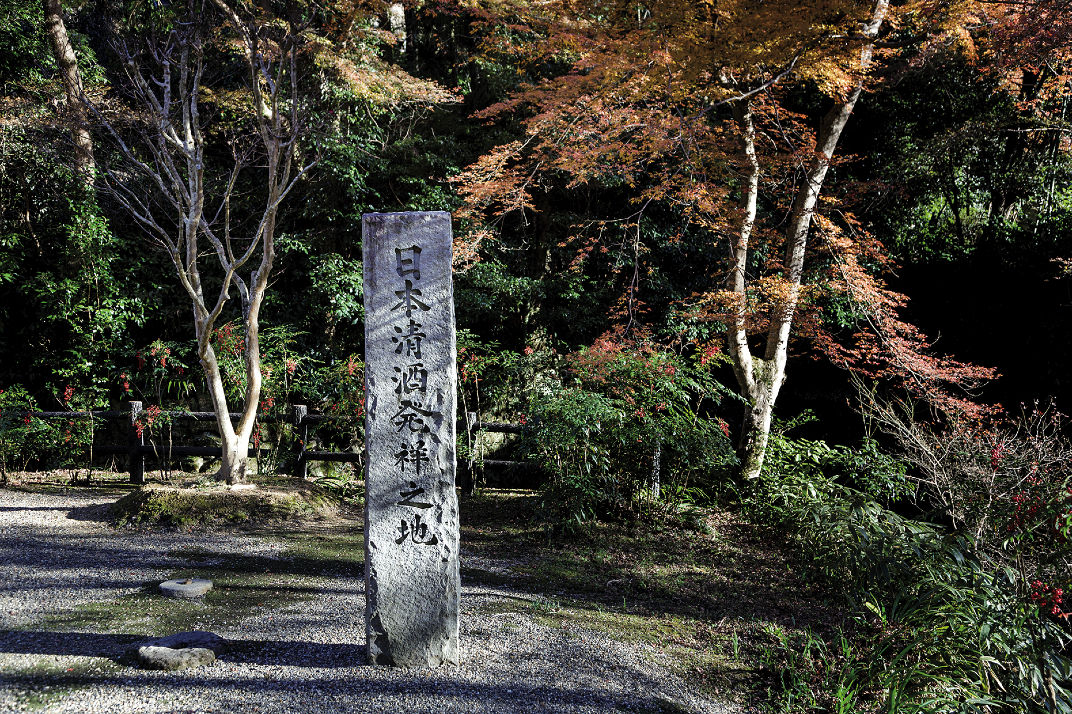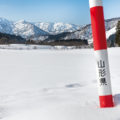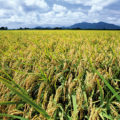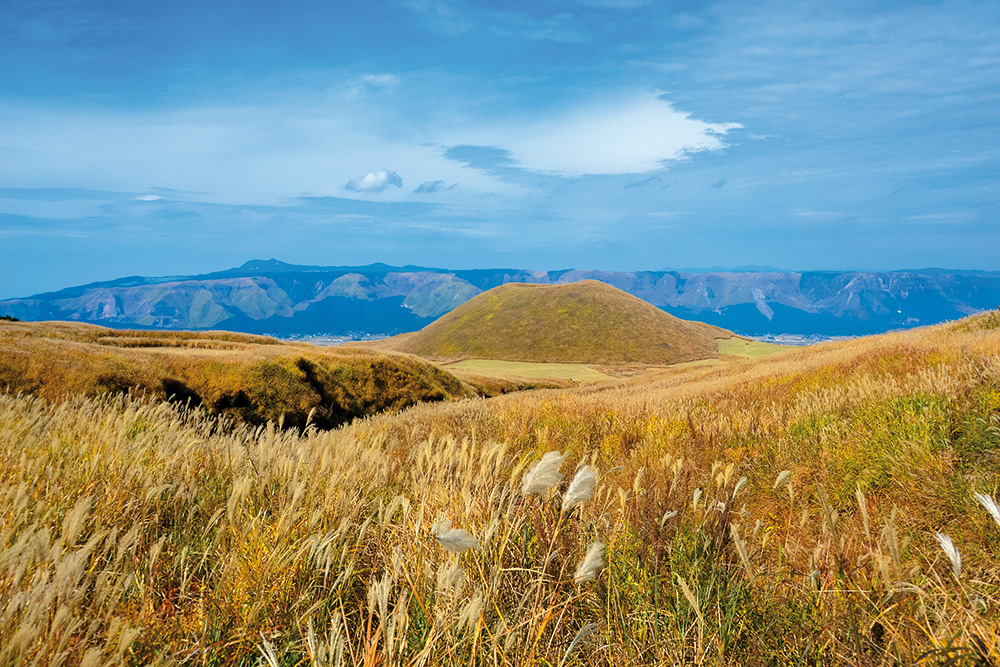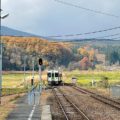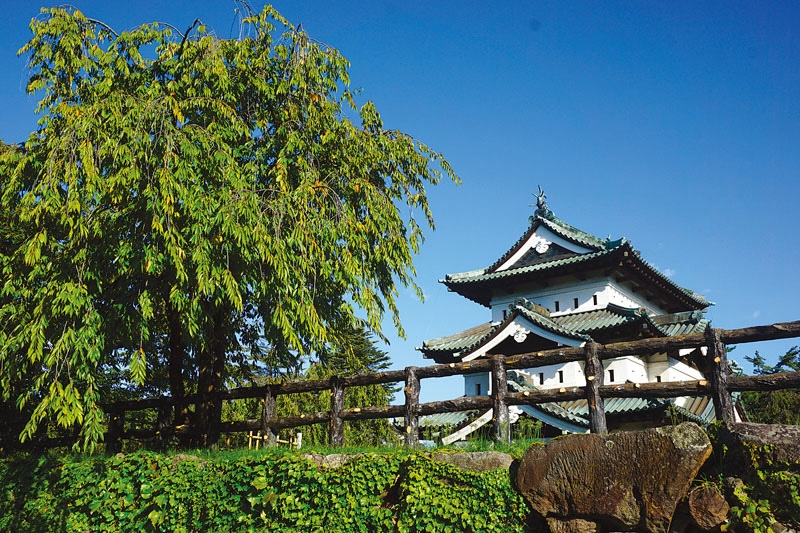
Famous for its castle, the city, once a significant political centre, has numerous attractions.
Ask any Japanese about Aomori Prefecture and they are likely to mention its mountains, lakes and primeval forests. However, its attractions go well beyond its abundant nature, and if you are particularly interested in the region’s history and culture, you should definitely visit Hirosaki.
Aomori’s third largest city is the main centre of the Tsugaru region and is the largest producer of apples in Japan, accounting for approximately 25% of the production. During the Edo period (1603-1867), it flourished as a castle town, and though the Meiji Restoration (1868) left it without political power, it’s still considered Aomori’s cultural and educational capital. Indeed, while Aomori is known for its harsh climate and somewhat rough character, a mood of quiet refinement permeates the city and even the local accent, far from the guttural sounds often heard elsewhere in the prefecture, is soft and elegant.
The origins of Hirosaki date back to the rise of the Tsugaru clan during the Sengoku period (1467-1603). In 1600, Tsugaru Tamenobu sided with Tokugawa Ieyasu during the decisive battle of Sekigahara and after defeating rival groups within the clan, planned the construction of a new castle in Hirosaki (then called Takaoka), which was completed in 1611, after his death, by his third son Nobuhira. For the next 250 years, the city became the region’s political, economic and cultural centre. It was only in 1871, with the abolition of feudal domains and the establishment of the modern prefectural system, that the capital of the newly created Aomori Prefecture was moved to Aomori City. However, on 1 April 1889, Hirosaki became the first incorporated city in the prefecture (along with 30 other cities nationwide) with a population of 31,375.
Hirosaki’s most striking feature, especially for travellers, is that since the early 17th century the city has managed to navigate Japan’s tumultuous history almost unscathed. This is despite the fact that in the Meiji period the city took on the characteristics of a military city as the 8th Army Division was headquartered here, covering the northern half of the Tohoku region. During the Second World War, for instance, the city did not suffer any damage, while 70% of nearby Aomori was destroyed by Allied air raids. After the Second World War, the 8th Division was disbanded and Hirosaki’s military role greatly diminished. On the other hand, in 1921 the public Hirosaki High School opened and in 1949 became Hirosaki University, Aomori Prefecture’s only national university. Several private colleges were later added, turning the city into the region’s academic capital. Today, the site of the 8th Army Division headquarters is the Faculty of Agriculture and Life Sciences.
Having been blessed by such a long period of uninterrupted peace, many historic buildings remain. Indeed, Hirosaki is one of the rare places in Japan where buildings from the Edo period coexist with Western-style buildings from the Meiji (1868-1911) and Taisho (1912-1925) periods, making it an ideal destination for architecture enthusiasts.
Hirosaki Castle is arguably the city’s main draw, being one of the country’s best-preserved fortresses. The castle’s entire structure, including the moat, stone walls, and earthworks, remains almost in its original form. In 1627, a lightning strike caused the main keep to catch fire, igniting the gunpowder inside and causing a huge explosion, which destroyed the keep itself, Honmaru Palace and various turrets. The keep was not rebuilt until 1810. All of the existing buildings are designated as National Important Cultural Properties. Currently, another keep has been removed in order to repair the castle’s stone walls directly below it, and it will be returned to its original position in 2025.
The castle grounds have been turned into a beautiful park that is currently managed by the city. It’s worth visiting all year round, but is especially popular between late April and early May during the Cherry Blossom Festival, an event that attracts tourists from all over Japan. Cherry trees have been planted since 1903, and there are now about 2,600 of them throughout the park, making blossom viewing in Hirosaki a truly spectacular experience.
On the other hand, due to the growth of the cherry trees, the castle remains mostly hidden behind their leaves and branches so much so that, from a distance, some of the moats, the walls and the main keep are hardly visible. Senda Yoshihiro, a professor at Nara University and a castle archaeologist, said on this matter: “I agree with protecting cherry trees and maintaining the landscape, but we should find a way to manage them so that the main features of the castle can be actually seen. We should change our approach to one that balances all the elements of a nationally designated historic site.”
Hirosaki Park rewards early risers because though the keep is closed until 9 am, the inner area of the castle grounds can be visited free of charge. The three-storey keep itself is rather small and unassuming, but a real surprise awaits visitors as they reach the back of the hill when they are suddenly confronted with the majestic shape of Mount Iwaki, the sacred mountain of Tsugaru. Similar in shape to Mount Fuji, Iwaki is about half as tall, but its closer proximity to the residential area makes it an even more imposing and awe-inspiring presence.
Many of Hirosaki’s other attractions are located around the castle, although, since the park is quite big, visiting them all requires a lot of walking (or you can rent a bicycle from the Tourist Information Office). South-west of the castle, for instance, is Zenringai, a temple district where 33 temples belonging to the Soto Zen sect were relocated from all over the Tsugaru region in the 17th century. Temples and tall cedar trees line both sides of a long straight road at the end of which stands Choshoji, the oldest and most important temple, which for many years was the Tsugaru clan’s family temple. A temple district built by this Buddhist sect is extremely rare in Japan. It is illuminated at night, lending the quiet district a magical atmosphere.
South of Hirosaki Park is the Fujita Memorial Garden, the former residence of Fujita Ken’ichi, a local businessman who also served as the president of the Japan Chamber of Commerce and Industry. When Fujita set up a villa in his hometown in 1919, he invited a gardener from Tokyo to create an Edo-style landscape. After his death, the property became the Hirosaki Sogo Bank Club (later known as Michinoku Bank Club), but, in 1987, as part of Hirosaki’s 100th-anniversary project, the city acquired and restored it before opening it to the public in 1991.
A fusion of Western and Japanese styles, the garden is divided into two parts – a highland area and a lowland area – by a 13-metre-high cliff. The highland area closer to the entrance is a Western-style garden with a view of Mt. Iwaki. It’s here that we find Fujita’s villa, a Western-style two-storey wooden mortar structure with an impressive design, including an octagonal tower. Currently, it has been turned into a cafe reminiscent of Taisho-period architecture.
The lowland area is a Japanese garden with a path around a pond to stroll along and a small but magnificent waterfall. The Japanese-style building is a one-storey wooden building that was built in 1937 in Itayanagicho as Fujita’s main residence and was moved to its current location in 1961. All the buildings inside the garden were designated as Nationally Registered Tangible Cultural Properties in 2003.
Fujita’s garden is not the only modern site worth visiting on the south side of Hirosaki Park. Other noteworthy buildings are the former 59th Bank Main Branch, the local branch of the United Church of Christ in Japan and the Hirosaki Gakuin Foreign Missionary Hall. Hirosaki is also famous for its large number of buildings designed by Maekawa Kunio, one of Japan’s leading architects.
Arguably the best of them all is the former Hirosaki City Library (1906). At that time, there was no public library in town as the private library that opened in 1903 had been requisitioned as housing for soldiers mobilized at the outbreak of the Russo-Japanese War. Eventually, five philanthropists financed the construction of a new library, among them Horie Sakichi who, coincidentally, had made large profits from the establishment of the 8th Division in Hirosaki and the delivery of various supplies to the military after the outbreak of the conflict with Russia (hence the building’s original name, the Russo-Japan War Memorial Hirosaki City Library). In 1989, the building was reacquired by the city and has been preserved and opened to the public. It’s now used as a facility of the Municipal Museum of Local Literature, and local publications and literary materials are on display.
The three-storey wooden building has a Renaissance-style design and is distinctive due to its octagonal towers. Keeping in mind its function as a library, the designers were careful to add many windows throughout the building to let in sunlight. Climbing up and down its creaky stairs feels almost like travelling back in time to a long-gone era.
On the north side of Hirosaki Park we find Nakacho, the former samurai district. Today, it mostly consists of modern private properties – fine houses with well-maintained gardens hiding behind tall hedges – but four old buildings still survive with their distinctive black wooden walls and traditional front gates, and can be visited free of charge.
While the above-mentioned places are the most famous tourist spots, the rest of Hirosaki is no less interesting and rewards curious travellers who like to go off the beaten track. In 1894, when Hirosaki Station opened as a stop on the Ou Main Line, the urban area of the castle town expanded towards the station. Then, in 1898, military facilities for the Army’s 8th Division were established south of the station and the city expanded further in that direction.
The area around Dotemachi is Hirosaki’s main shopping district. Originally, during the feudal period, it was a centre for artisans and craftsmen. In 1649, for instance, there were 64 townhouses including carpenters, blacksmiths, silversmiths, and tobacco and liquor shops. The area became a shopping district during the Meiji period, while the following Taisho era, when modern urban culture flourished, saw the opening of Kakuha Miyagawa, the Tohoku region’s first department store. Today, Dotemachi’s main street stretches diagonally away from the castle and is one of the most prosperous downtown areas in the Tohoku region with many commercial facilities.
In the 1950s, the Hirosaki Electric Railway Owani Line opened and its terminal, Chuo-Hirosaki Station, was built south of Dotemachi, leading to the development of Kajimachi as an entertainment district. A walk around this area offers a chance to see a different, rougher side of Hirosaki, one that is rarely advertised in the brochures, but it’s equally interesting. Around these streets you’ll also find eateries hosting live performances of Tsugaru shamisen, the region’s most distinctive music genre and an acrobatic playing technique where players strike the strings and skin of the instrument very hard and fast with their bachi (plectrum).
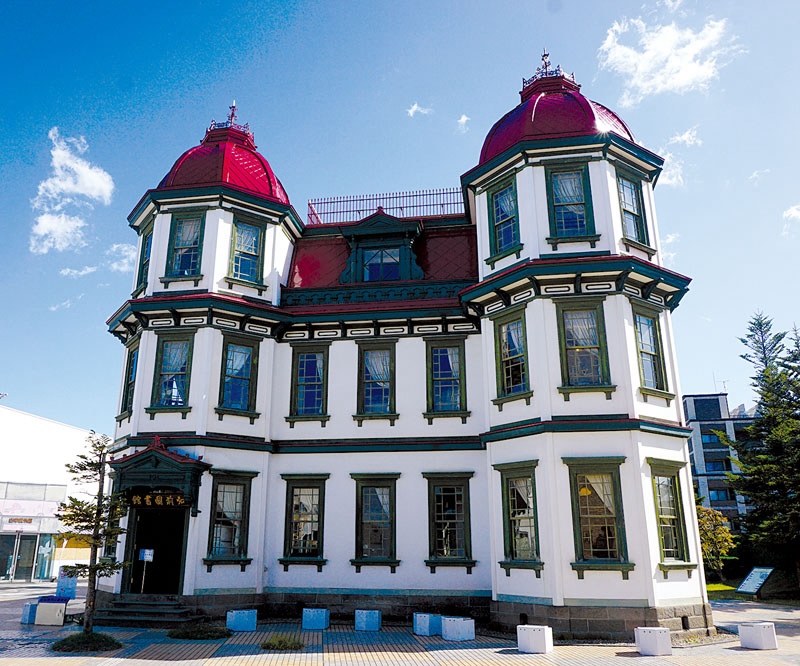
Fans of famous author Dazai Osamu may want to venture even further south, beyond Kajimachi, all the way to the house where he spent three years when he attended high school. Dazai is infamous for trying to commit suicide multiple times, and this house (his uncle’s) is where he tried it for the first time on the eve of his graduation exams. Inside, many photographs of the young Dazai hang from the walls, and his room is still unchanged including some graffiti he scribbled on the wall.
Apparently, Dazai did not have a high regard for the people of Hirosaki. As he wrote in his diary: “Although Hirosaki is a city where gidayu (drama ballads with a strong narrative aspect typical of the bunraku puppet theatre) is popular, the local men keep practicing hauta (Japanese traditional songs or ballads sung to the accompaniment of the shamisen) because they want to be praised by the geisha they often visit. They are shrewd people who use their chic demeanour as a business strategy.
“The people of Hirosaki have a real sense of stupidity, and they don’t know how to bow to the strong even if they lose. They stick to their own pride and make fun of the world.”
Hirosaki is called a “town of castles, cherry blossoms, and apples”. Western apples were grown in Aomori Prefecture for the first time in 1877, and since then Hirosaki has gone on to become the largest producer of apples in Japan. Wherever you go, they never fail to remind you about it, and have gone as far as to create a map of famous stores and bakeries where you can taste different pies and apple-based specialties.
Apples aside, Hirosaki has plenty of restaurants, but for a unique dining experience that somewhat contradicts the city’s refined character, you should pay a visit to Niji no Mart (Rainbow Mart). Housed in a nondescript building not far from the station, the place is affectionally known as the Kitchen of Hirosaki Citizens and looks, smells and feels like a neighbourhood market with various stalls and shops lined up on both sides of the aisle. Groceries apart, there are a few diners where you can try ramen and other local delicacies at reasonable prices and shops selling anything from bread to sushi, but the most popular place seems to be Okazuya no Hamada (Hamada’s Fry Shop), a dirt-cheap purveyor of such local soul food as igamenchi (minced squid cutlets), dekkai aji fry (giant slabs of deep-fried horse mackerel) and natto hanpen (white triangle-shaped fish cakes stuffed with fermented soya beans – which taste better than it sounds). For a few hundred yen, you can even get white rice and miso soup, then head to the eat-in space within the facility where you can tuck into your food while listening to the people around you chat in their warm and exotic-sounding local dialect. Finally, to cleanse your mouth of all that heavy-tasting food, go for a cup of java at Brother, a just-opened coffeeshop whose owner, a Hirosaki native, this year reached the finals of the Japan Hand-Drip Championship.
Finally, we would not do Hirosaki justice if we did not mention its popular events, particularly the Neputa Festival which has been designated as a Nationally Important Intangible Folk Cultural Property. Held in August, it attracts more than one million people every year and has become Hirosaki’s representative summer festival.
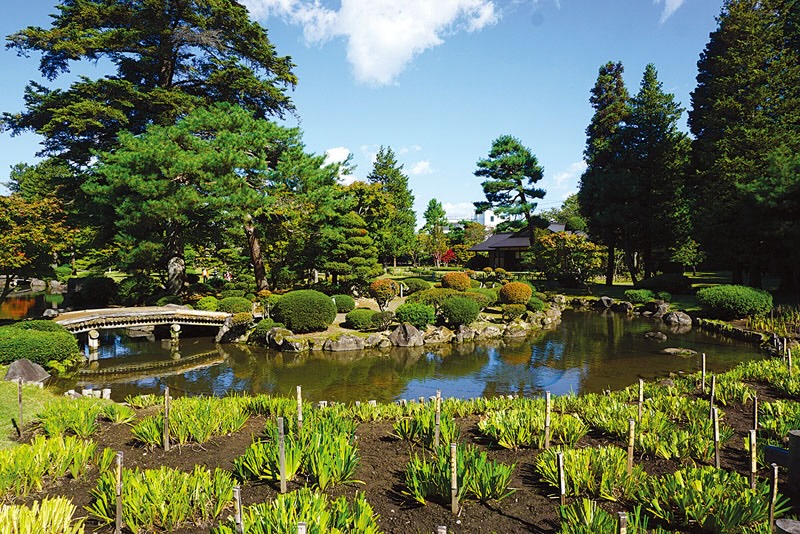
Crowds of citizens parade around the city pulling floats with pictures of warriors on them. The floats are divided into two categories, Ogi Neputa (fan-shaped) and Kumi Neputa (doll-shaped). There are about 80 Neputa in total, the largest number in the prefecture.
If you can’t go in August, the next best thing you can do is visit the Tsugaruhan Neputa Village, an experiential tourism facility devoted to the festival’s history and craft. In addition to the Neputa Museum, it features a permanent exhibition hall where demonstrations of Neputa music are held; Yamagendo, where you can listen to live Tsugaru shamisen performances; and a tour of the production of folk crafts from the Tsugaru region (kokeshi dolls, spinning tops, Tsugaru Nishiki-e paintings, decorated kites, and Tsugaru lacquerware), and where you can try your hand at making some of those traditional products.
There are several Neputa on display at all times, including the large 10-metre-tall Neputa that took part in the opening ceremony of the 32nd National Athletic Meet held in Aomori Prefecture in 1977. As you can go inside the Neputa, you can actually see their structure and framework.
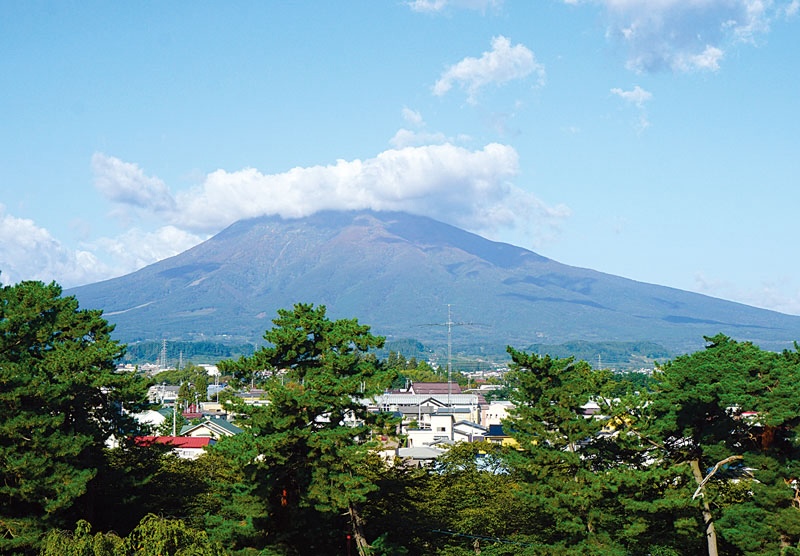
Gianni Simone
To learn more on the subject, check out our other articles :
N°136 [FOCUS] The essential spirit of Zen
N°136 [EXPERIENCE] Letting go for real
N°136 [TRADITION] At the heart of stone gardens
N°136 [TREND] The importance of practicing Zen
Follow us !

